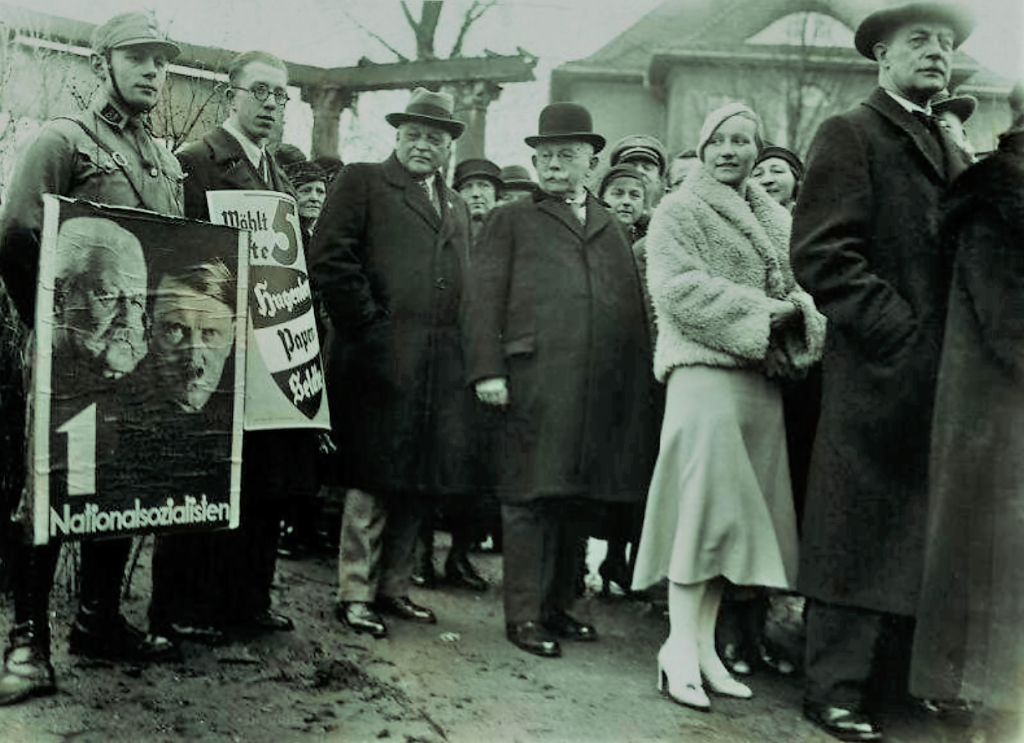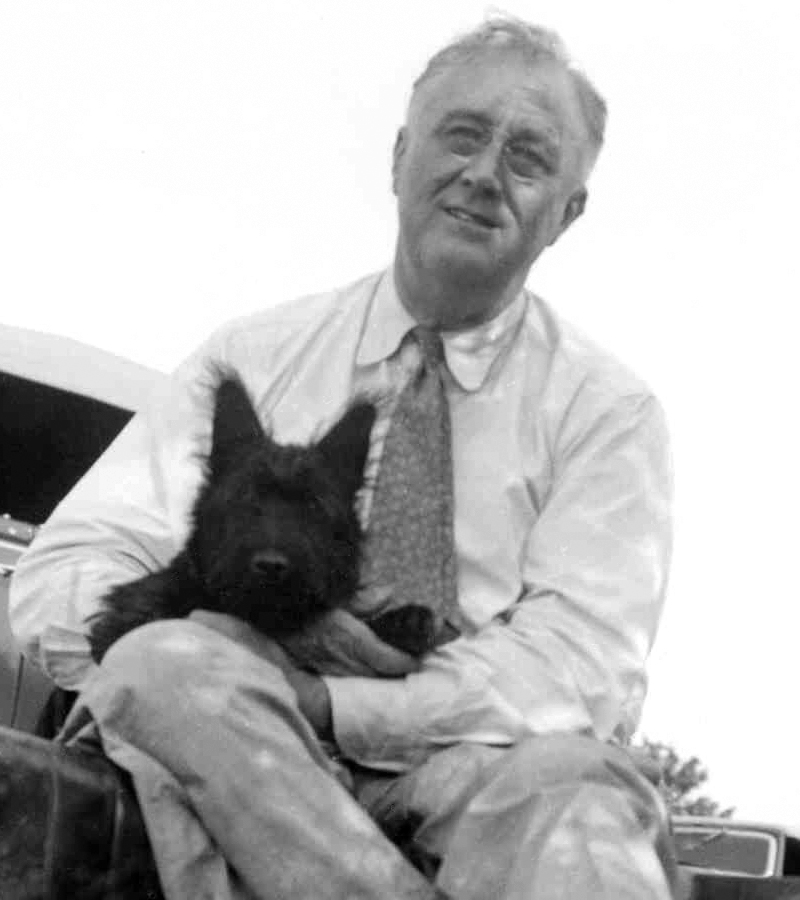
On 5 March 1933, the Nazi Party won nearly 44 per cent of the vote, which gave them 288 seats in the Reichstag. Hitler formed a coalition with the National Party (8 per cent). The Communist party won 81 seats.
There were 44,685.764 entitled to vote. The voter turnout was 88.74%. The Invalid vote were 0.79%. The total valid votes was 39,343.331. Of those votes, 43.9% went to the NSDAP, the Nazi party. This means that 19,617.022 voted for the Nazis.

The 1933 election followed the previous year’s two elections (July and November) and Hitler’s appointment as Chancellor. In the months before the 1933 election, SA and SS displayed terror, repression and propaganda across Germany, 339 Nazi organizations “monitored” the voting process. In Prussia 50,000 members of the SS, SA and Der Stahlhelm were ordered to monitor the votes by acting Interior Minister Hermann Göring, as auxiliary police.
Despite the reign of terror and the first wave of arrests of Communists, Social Democrats and trade unionists, in the Reichstag elections of 5 March 1933 the Communist Party of Germany (KPD) obtained 12.3% of the vote and the Social Democratic Party of Germany (SPD) 18.3%, while the moderate centre-right parties, namely the Centre Party and the Bavarian People’s Party (BVP), polled 13.9%
The Nazis did not receive enough votes to form a government so it needed the support of a coalition partner, the German National People’s Party (DNVP) who received 8% of the votes.

This would be the last contested election held in Germany until after World War II. Despite now holding a bare working majority in the Reichstag, Hitler wanted more. Two weeks after the election, he was able to pass an Enabling Act on 23 March with the support of all non-left-wing parties, which effectively gave Hitler dictatorial powers. Within months, the Nazis banned all other parties and turned the Reichstag into a rubberstamp legislature comprising only Nazis and pro-Nazi supporters.
Although there was violence around the elections, the Nazis were elected legally. Just think about that for a minute.

Very soon, on 31 March 1933, the Government adopted, without parliamentary involvement, the Act Establishing the Identity of the Länder(countries) with the Reich (Gesetz über die Gleichschaltung der Länder mit dem Reich), which abolished the autonomous rights of the Länder, replacing them with a stringent centralized rule. Ten months later, the Reich Restructuring Act (Gesetz über den Neuaufbau des Reichs) dissolved the parliaments of the Länder. This was followed on 14 February 1934 by the dissolution of the Reichsrat, the national representative assembly of the Länder. In the summer of 1934, another crucial step was taken towards the establishment of the ‘Führer state’ with the Night of the Long Knives at the end of June and the beginning of July, when Hitler had troublesome rivals removed from the political scene or murdered. Following Hindenburg’s death on 2 August 1934, a law amalgamating the offices of President and Chancellor – likewise adopted without parliamentary approval – enabled Hitler to assume the title of ‘Leader and Chancellor of the Reich’ (Führer und Reichskanzler). He also became commander-in-chief of the Wehrmacht, whose members henceforth swore an oath of allegiance to him personally and no longer to the Weimar Constitution.
After the adoption of the Enabling Act, the Reichstag only ever met on 19 occasions. It adopted seven laws, compared with 986 enacted by the Government. By the time of the Reichstag election of 12 November 1933, voters were already being presented with a single list of candidates whom they could approve or reject en bloc. Through the withdrawal of the mandates of Communist and Social Democrat members and the defection of representatives of the middle-class parties to the NSDAP, the Reichstag ultimately developed into a one-party parliament, whose members had to swear allegiance to the Führer. The insignificance of the parliament contrasted with the fact that a parliamentary seat carried great prestige and provided ample financial security, with which long-serving and distinguished party officials of the NSDAP were rewarded. The status attached to Parliament by the National Socialists is also reflected in the fact that the Reichstag building was never restored as a venue for plenary sittings. Instead, Parliament met in the Kroll Opera House, which had staged its last performance in 1931.
On that same day, 5 March 1933, Catharina Aldewereld was born in Amsterdam. About 9.5 years later on 5 October 1942, Catharina would be murdered in Auschwitz by that regime that was put in power in Germany by 19.6 million of its citizens.

sources
https://www.joodsmonument.nl/en/page/168482/catharina-aldewereld
https://www.bundestag.de/en/parliament/history/parliamentarism/third_reich/third_reich-200358
https://www.bbc.co.uk/bitesize/guides/z3kqrwx/revision/3
http://www.gonschior.de/weimar/Deutschland/RT8.html

Donation
I am passionate about my site and I know you all like reading my blogs. I have been doing this at no cost and will continue to do so. All I ask is for a voluntary donation of $2, however if you are not in a position to do so I can fully understand, maybe next time then. Thank you. To donate click on the credit/debit card icon of the card you will use. If you want to donate more then $2 just add a higher number in the box left from the PayPal link. Many thanks.
$2.00














You must be logged in to post a comment.